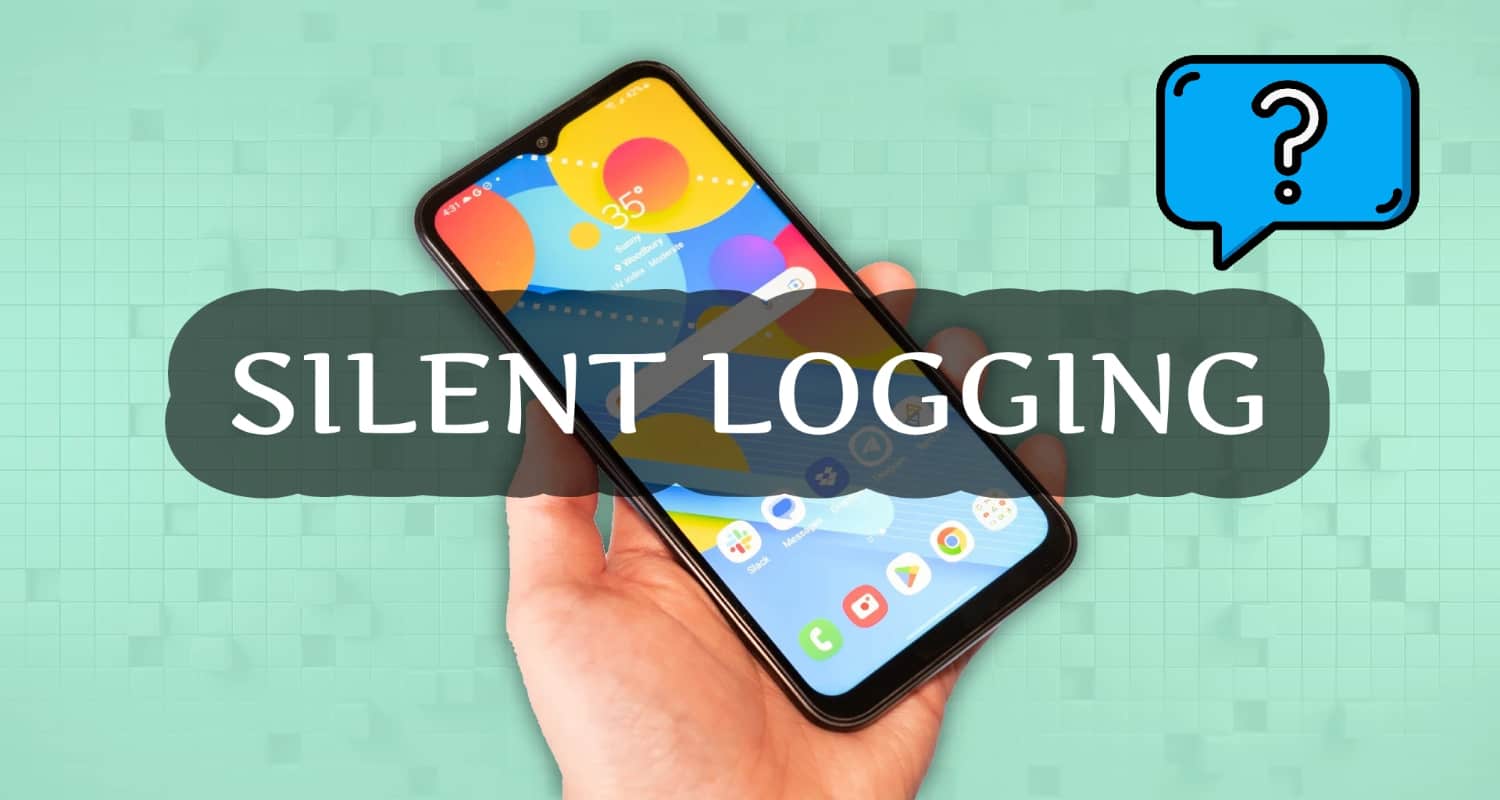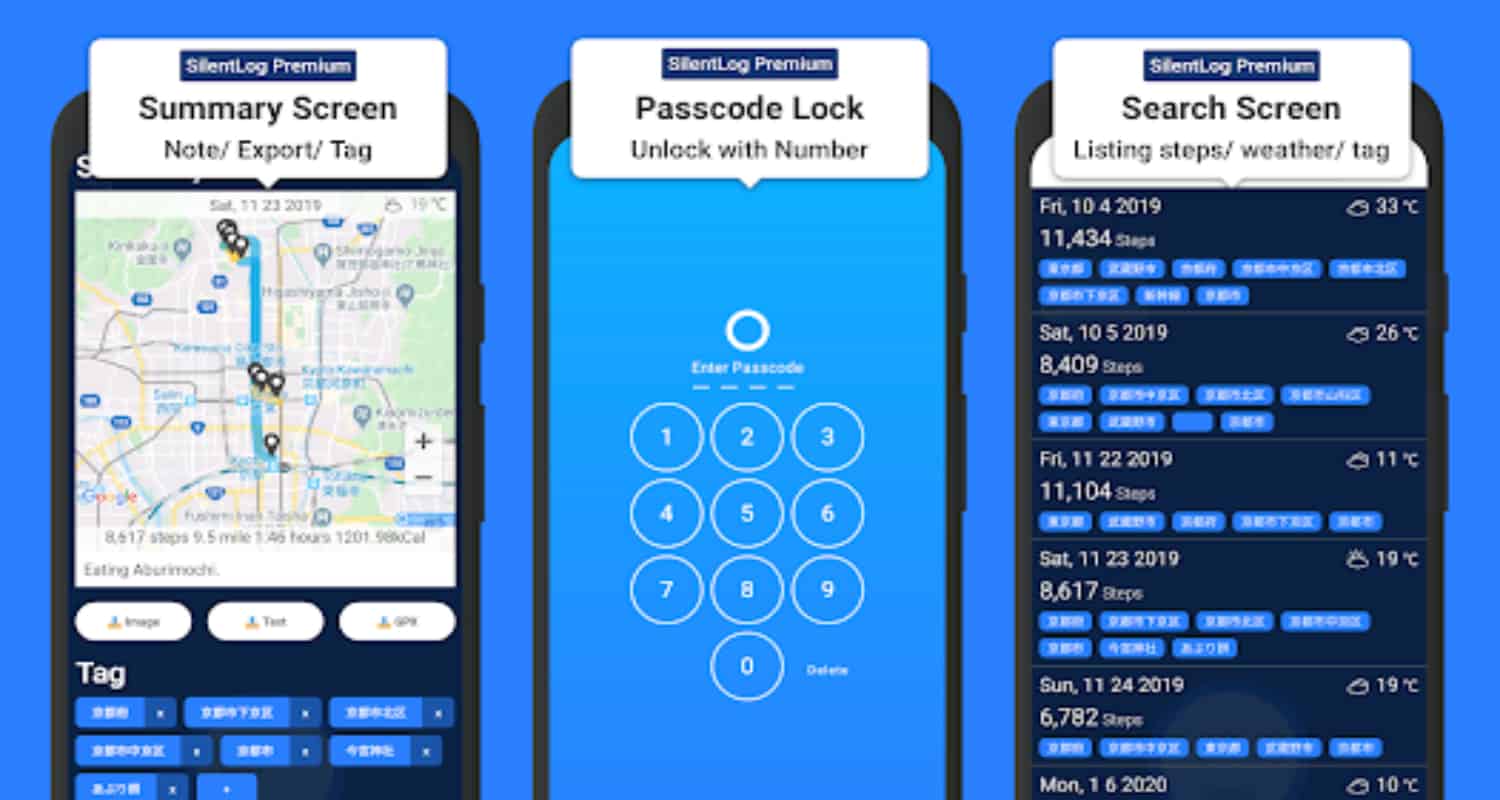
Have you ever stumbled upon ‘Silent Logging’ on your Android device and wondered, ‘what is silent log android?’ You’re not alone. In the digital age, where privacy is as precious as gold, any unfamiliar app lurking in the corners of our smartphones can set off alarm bells. Silent Logging, with its enigmatic presence, often leaves users puzzled and uneasy. Is it a silent guardian of your phone’s data or a hidden menace to your privacy?
What is Silent Logging on Android? Silent Logging on Android is a system application primarily found in Samsung devices. It works closely with the device’s modem, logging important data like call logs and SMS for backup purposes, ensuring easy restoration on new devices or after factory resets. Despite misconceptions, it’s not spyware but a standard feature for data management and recovery.
But here’s the good news: we’re diving deep into the world of Silent Logging to unravel its mysteries. We’ll dissect what it really is, its purpose, and how it impacts your Android experience. By the end of this exploration, you’ll not only understand Silent Logging but also learn how to master it, turning a source of anxiety into an element of your informed digital strategy.
See Also: What is Samsung Android Honeyboard? Enhancing Your Typing
What is Silent Logging?
In the intricate world of Android smartphones, ‘Silent Logging’ emerges as a term that often leaves users scratching their heads in bewilderment. So, what exactly is this mysterious feature?
At its core, Silent Logging is an android system app, predominantly found in Samsung devices, though it’s not exclusive to them. Its primary function is akin to a diligent archivist, meticulously logging crucial data such as call logs and SMS messages. This isn’t done for the sake of snooping or espionage. Instead, think of Silent Logging as your digital backup buddy, ensuring that your important data is safely stored and can be easily retrieved when you switch to a new device or need to recover data after a factory reset.
Now, why is Silent Logging more commonly associated with Samsung? It’s not because Samsung has a secret agenda, but rather due to their transparent system app management. Samsung, known for its user-friendly interface, includes Silent Logging as part of its robust system applications suite. This visibility often leads to its discovery by curious users, navigating through the labyrinth of system apps.
In essence, Silent Logging is not the cloak-and-dagger spy tool it’s often mistaken for. It’s simply a functional piece of software, quietly working in the background, ensuring your data’s safety and seamless transition across devices.
The Functionality of Silent Logging
Silent Logging, often shrouded in mystery, plays a crucial yet understated role in the Android ecosystem, particularly in devices like those from Samsung. Let’s demystify its functionality and understand how silent logging android interacts with your device’s inner workings.
Role and Operations:
At its heart, Silent Logging is like a meticulous librarian for your smartphone. It’s responsible for logging a variety of data, primarily focusing on call logs and text messages. But why? The answer lies in data backup and recovery. In the event you switch phones or perform a factory reset, Silent Logging ensures that your essential data doesn’t vanish into the digital ether. It’s a safety net, quietly operating in the background, safeguarding your digital footprints.
Interaction with Modem and Kernel:
Silent Logging’s operations are deeply intertwined with two critical components of your device: the modem and the kernel. The modem, responsible for communication functions, is where Silent Logging steps in to monitor and log data related to calls and messages. This isn’t just about keeping a record; it’s about ensuring that your communication history is preserved and easily restorable.
The kernel, the core of your Android’s operating system, plays a pivotal role too. Silent Logging interacts with the kernel to access and manage low-level functions like networking and memory management. This interaction is key to Silent Logging’s ability to perform its duties efficiently and unobtrusively.
In summary, Silent Logging operates as a silent guardian of your communication data. Its seamless integration with the modem and kernel allows it to perform its backup role effectively, ensuring that your data is always there when you need it, without intruding into your daily device usage.
Common Misconceptions and Clarifications
In the realm of Android users, particularly among Samsung device enthusiasts, Silent Logging often gets entangled in a web of misconceptions, the most common being its mistaken identity as spyware or malware. Let’s set the record straight. For more details on managing your device’s security, check out this guide.
Spyware? Not Quite!
The notion of Silent Logging as spyware stems from a misunderstanding of its functionality. Spyware, by definition, is malicious software that secretly observes the user’s activity without consent. Silent Logging, on the other hand, is a legitimate system application designed for data logging and backup. It’s not lurking in the shadows to spy on your personal information. Instead, it’s more like a diligent assistant, keeping track of your call logs and messages for backup purposes.
Malware Misconception
Similarly, labeling Silent Logging as malware is another misconception. Malware disrupts, damages, or gains unauthorized access to a computer system. Silent Logging does none of these. It operates within the boundaries of its intended purpose – data backup. It’s an integral part of the system, pre-installed by the manufacturer, and functions with the user’s best interest in mind.
Clarifying Its Legitimate Purposes
The real purpose of Silent Logging is straightforward – it’s there to ensure that your essential communication data is not lost. In scenarios like switching phones or recovering data post-factory reset, Silent Logging is the unsung hero that makes data retrieval a breeze. It’s a functional tool, not a nefarious one.
In conclusion, Silent Logging is neither spyware nor malware. It’s a misunderstood but essential part of your Android device, working silently to protect your data. Understanding its true purpose helps dispel fears and appreciate its role in our digital lives.
Permissions and Privacy Concerns
While Silent Logging requires certain permissions to function, it’s important to understand that these permissions are not about invading your privacy but are necessary for the app to perform its intended backup functions. The silent logging app on Android operates under the constraints of Android’s security framework, ensuring that it doesn’t overstep its boundaries. Learn more about Android’s security features here.
Essential Permissions for Functionality
Silent Logging’s primary role is to log and back up communication data, which necessitates access to specific aspects of your device. These include:
- Call Logs and Messages: To back up your call history and text messages, Silent Logging needs access to these areas. This permission is crucial for its core functionality of preserving your communication records.
- Network Access: For backing up data, Silent Logging requires access to your device’s network capabilities. This isn’t about monitoring your internet activity but rather ensuring that it can securely store your data.
- System Integration: Being a system app, Silent Logging is integrated deeply within the device’s operating system, requiring permissions that allow it to interact with other system components for efficient operation.
Addressing Privacy Concerns
The permissions required by Silent Logging often raise eyebrows in terms of privacy. However, it’s important to understand that these permissions are not about invading your privacy but are necessary for the app to perform its intended backup functions. Silent Logging operates under the constraints of Android’s security framework, ensuring that it doesn’t overstep its boundaries.
Legitimacy and Transparency
Silent Logging’s legitimacy is further reinforced by its transparency. As a pre-installed system app, it’s not hidden from the user. Most Android devices, especially Samsung, provide users with the ability to view and manage these system apps, including Silent Logging. This openness is a testament to its legitimacy and the manufacturer’s commitment to user privacy.
In summary, while Silent Logging requires certain permissions to function, these are in line with its role as a data backup tool. Understanding these permissions helps alleviate privacy concerns, highlighting the app’s legitimacy and its importance in the Android environment.
Impact on Device Performance
Silent Logging, despite its unobtrusive nature, does have an impact on your Android device’s performance, particularly in terms of battery life. Let’s delve into how this system app influences your device’s day-to-day functioning.
Battery Life and Silent Logging
One of the most noticeable effects of Silent Logging is on battery consumption. Users often report that their device’s battery life diminishes more quickly than expected, and Silent Logging is sometimes identified as a contributing factor. 
Performance Considerations
In terms of overall device performance, Silent Logging is generally not a significant burden. However, some users have observed that their devices seem to lag or become less responsive, attributing this to the background operations of Silent Logging. It’s important to note that these experiences can vary widely depending on the specific device model, its hardware capabilities, and the number of other processes running concurrently.
User Observations and Complaints
The user community has voiced mixed observations regarding Silent Logging. While some users don’t notice any impact, others express concerns about decreased battery life and occasional performance hiccups. These complaints often arise from a lack of clarity about what Silent Logging does, leading to uncertainty about whether its benefits outweigh its impact on device performance.
In conclusion, while Silent Logging does have some impact on battery life and overall device performance, it’s generally minimal and varies from one device to another. Understanding its role and balancing its utility against its resource consumption can help users make informed decisions about managing this system app.
Managing Silent Logging: A User’s Guide
Navigating the management of Silent Logging on your Android device, especially if it’s a Samsung model, can be a crucial step towards personalizing your device’s performance and privacy settings. The ‘silent logging samsung‘ feature, while often misunderstood, can be managed effectively with a few simple steps.
Disabling or Force Stopping Silent Logging
- Accessing Application Manager: Go to your device’s settings and find the ‘Application Manager’ or ‘Apps’.
- Locating Silent Logging: Scroll through the list of apps until you find ‘Silent Logging’.
- Disabling the App: Select ‘Silent Logging’ and tap on ‘Disable’ or ‘Force Stop’. This will temporarily halt its operations but won’t remove it from your device.
Uninstalling Silent Logging
-
Using Android Debug Bridge (ADB):
- Enable ‘Developer Options’ and ‘USB Debugging’ on your device.
- Connect your device to a PC and use ADB commands to remove Silent Logging.
- The command usually follows the pattern: adb shell pm uninstall -k –user 0 <package_name>.
-
Using System App Removers:
- Install a trusted system app remover from the Play Store.
- Grant it necessary permissions and use it to locate and uninstall Silent Logging.
FAQs
What is Silent Logging on Android?
Silent Logging is a system application found mainly on Samsung devices. It logs important data like call logs and SMS for backup purposes, aiding in data restoration on new devices or after factory resets.
Is Silent Logging a type of spyware or malware?
No, Silent Logging is not spyware or malware. It's a legitimate system app designed for data backup and recovery, not for secretly monitoring user activity.
Can Silent Logging affect my phone's battery life?
Silent Logging can have a minimal impact on battery life due to its background data logging activities, but it's generally not significant enough to cause major battery drain.
How can I manage or disable Silent Logging on my Android device?
You can manage Silent Logging by going to your device's Application Manager, finding Silent Logging, and choosing to disable or force stop it. For complete removal, use Android Debug Bridge (ADB) or a system app remover.
Does Silent Logging pose a risk to my privacy?
While Silent Logging requires certain permissions to function, it operates within Android's security framework and is not designed to compromise user privacy. Its main function is data backup, not data theft.
Conclusion
Throughout this exploration of Silent Logging, we’ve uncovered its true nature, debunked common myths, and understood its impact on device performance. Silent Logging, far from being a nefarious tool, is a functional system app designed for data backup and recovery. However, its management rests in the hands of the user. By understanding how to disable, force stop, or even uninstall Silent Logging, users can take control of their device’s performance and privacy settings.
Further Reading and Resources
For those keen on delving deeper into the world of Android system apps and their management, here are some resources:
Additionally, exploring topics like ‘Android Privacy Settings’ and ‘Optimizing Android Performance’ can provide further insights into managing your device effectively.

Valentina has covered consumer electronics for a number of publications including Wired, Laptop Mag and Ars Technica, with a particular focus on wearables, PCs and other mobile tech. She studied journalism and English at Syracuse University, and has been curious about tech ever since she was a little girl. How she convinced her parents to let her have a PalmPilot at eight years old, she’ll never know.





